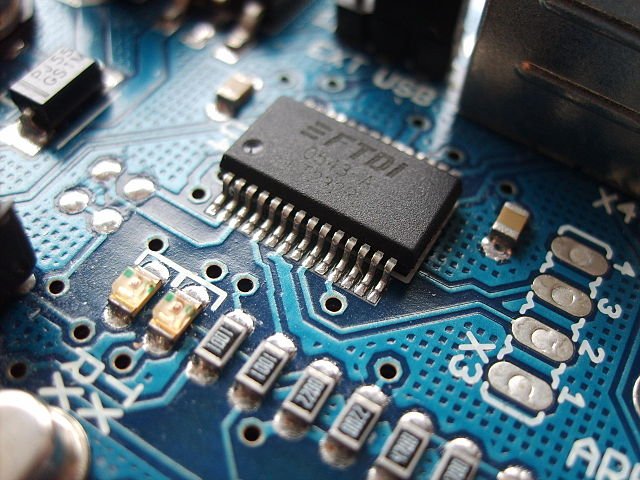Electrical and Electronic Components Effluent Guidelines

The EPA promulgated the Electrical and Electronic Components (E&EC) Effluent Guidelines and Standards (40 CFR Part 469) in 1983. The regulation covers directA point source that discharges pollutants to waters of the United States, such as streams, lakes, or oceans. and indirectA facility that discharges pollutants to a publicly owned treatment works (municipal sewage treatment plant). dischargers. The E&EC Effluent Guidelines and Standards are incorporated into NPDES permits for direct dischargers, and permits or other control mechanisms for indirect dischargers (see Pretreatment Program).
On this page:
- What is the Electrical and Electronic Components Industry?
- Facilities Covered
- Detailed Study
- Guidance Documents
- Rulemaking History
- Additional Information
What is the Electrical and Electronic Components Industry?
E&EC facilities manufacture semiconductors, such as integrated circuits and light emitting diodes (LEDs); electronic crystals (made from quartz, ceramics and other materials), cathode ray tubes; and luminescent materials used as coatings in fluorescent lamps.
Wastewater is generated from processes such as etching, cleaning, degreasing, cutting and grinding. Pollutants found in wastewaters include fluoride, arsenic and organic compounds.
| Processes | Description |
|---|---|
| Cutting and slicing | Crystals are cut or sliced using diamond blade saws or slurry saws. Water can be used for cooling and lubrication and to carry away removed material. |
| Lapping or polishing | Mechanical grinders and chemical etchants are used to remove surface oxides and to provide a smooth surface. Water can be used for cooling and lubrication and to carry away removed material. |
| Cleaning, rinsing and degreasing | Removal of etchants, photoresist material, stripping solutions and acid and alkaline solutions from materials after various processing and production steps. |
These activities are included within the following NAICS groups:
- 325180: Other Basic Inorganic Chemical Manufacturing
- 334413: Semiconductor and Related Device Manufacturing
- 334418: Printed Circuit Assembly (Electronic Assembly) Manufacturing
- 334419: Other Electronic Component Manufacturing
Note: the NAICS listing is provided as a guide and does not define the coverage of the E&EC category. For precise definitions of coverage, see the applicability sections in 40 CFR Part 469.
Facilities Covered
- Semiconductor (Subpart A)
- Electronic Crystals (Subpart B)
- Cathode Ray Tube (Subpart C)
- Luminescent Materials (Subpart D)
Detailed Study
As announced in the Effluent Guidelines Program Plan 15 (January 2023), the EPA has completed a detailed study of the E&EC category. The EPA’s review of monitoring data from these facilities does not demonstrate a need to revise the existing regulation at this time. The PFAS data the EPA reviewed are limited; however, the EPA intends to continue to monitor discharges of PFAS from this category and expects to review additional data in the coming years to help identify any significant sources of these chemicals in future reviews.
Guidance Documents
- Permitting Guidance for Semiconductor Manufacturing Facilities (Memo, April 21, 1998)
Clarification on the scope of the E&EC Category and the Metal Finishing Category (40 CFR Part 433) applicable to semiconductor manufacturing facilities - Guidance Manual for Implementing Total Toxic Organics (TTO) Pretreatment Standards (1985)
Rulemaking History
1983 “Phase 2” Rule
- Documents, including:
- Final Rule (December 14, 1983)
- Development Document (February 1984)
Industry description, wastewater characterization, treatment technologies, regulatory compliance cost estimates and pollutant loadings for the final rule - Proposed Rule (March 9, 1983)
1983 “Phase 1” Rule
- Documents, including:
- Final Rule (April 8, 1983)
- Development Document (April 1983)
Industry description, wastewater characterization, treatment technologies, regulatory compliance cost estimates and pollutant loadings for the final rule - Proposed Rule (August 24, 1982)
Additional Information
For additional information regarding the E&EC Effluent Guidelines, please contact Anthony Tripp (tripp.anthony@epa.gov) or 202-566-1419.

